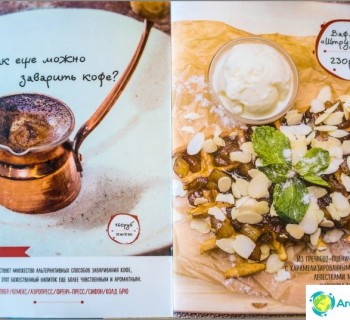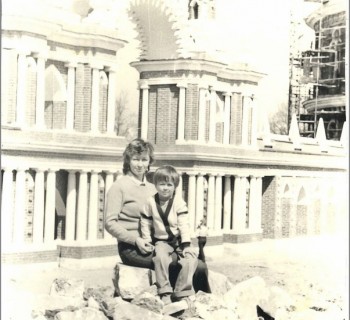We fell in love with Warsaw for a combination of some factors ... Maybe move there for a while? Moreover, the scheme is quite real. But oh well, this is the topic of another post (I'll tell you soon). And today we are talking about a great park, next to which we lived for 2 months.
The Royal azienki Park is something that Poles can really be proud of. After all, having almost destroyed Warsaw, the Nazis were unable to liquidate the park. They tried. The buildings of the park were stuffed with explosive shells and set on fire. The fire did its job, but the facades for the most part survived. After the war, azienki was restored, and not recreated from pictures, like the Royal Palace or the Cathedral of John the Baptist in old town.
The content of the article
Walks in the azienki park
Lazienki Park (Park Lazienkowski or Lazienki Krolewskie) is a hefty palace and park complex in the center of Warsaw, next to the old center. Area - 76 hectares. The time of birth is the 17th century. On the territory there are a lot of natural delights (lake, river, relict trees) and man-made (greenhouses, palaces, buildings and sculptures in the Roman style, observatory, monuments, etc.).
When we lived in Poland, we sometimes went to azienki for a walk, since it was only 10-15 minutes walk from our apartment. You know, the park is really very cool. Something he looks like Tsaritsinsky, in the same way, there is a lot of nature and it is felt that it does not become an ownerless forest, they monitor the state. No debris, no debris.
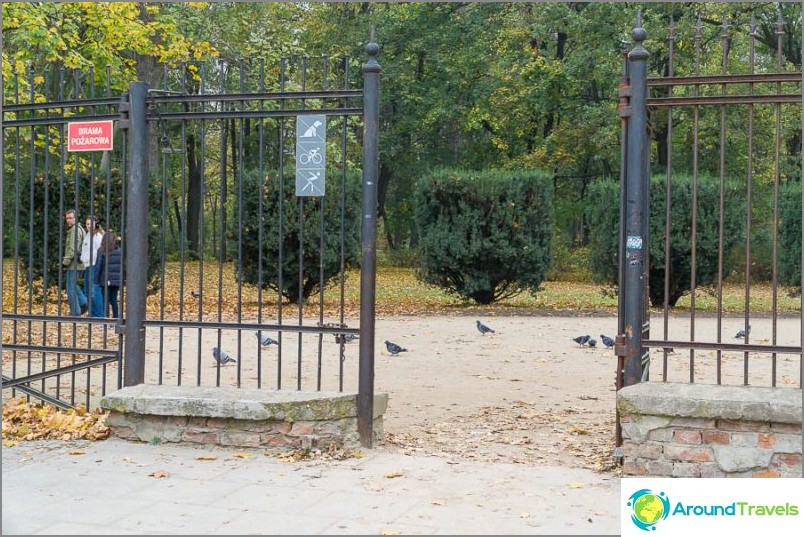
One of the entrances to azienki, we see a ban on bicycles, rollers and dogs

One of the alleys of the park
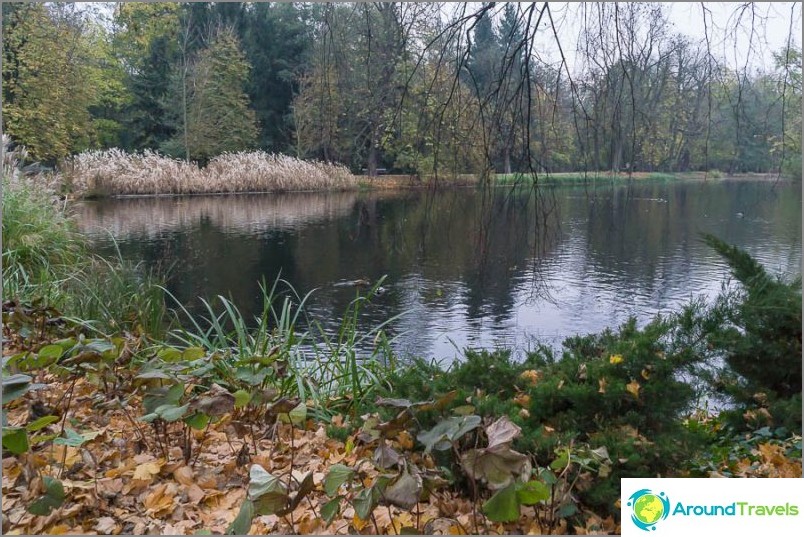
One of the ponds in the park
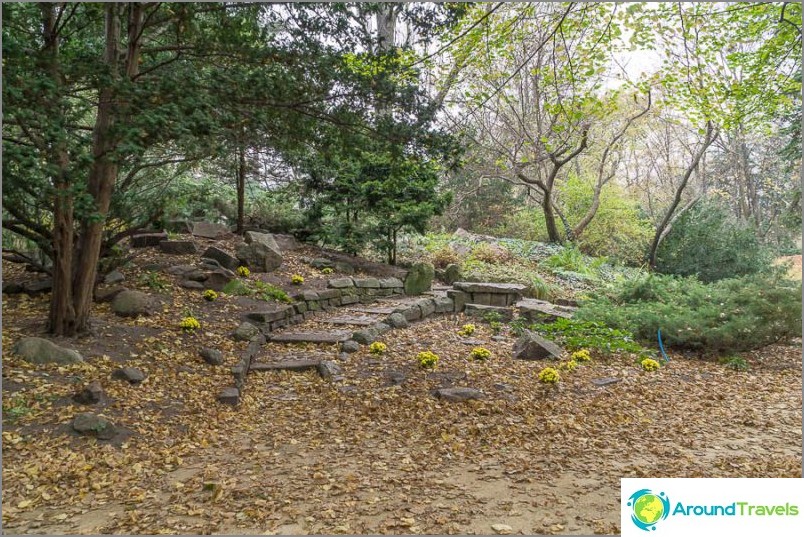
Handmade but cute corners
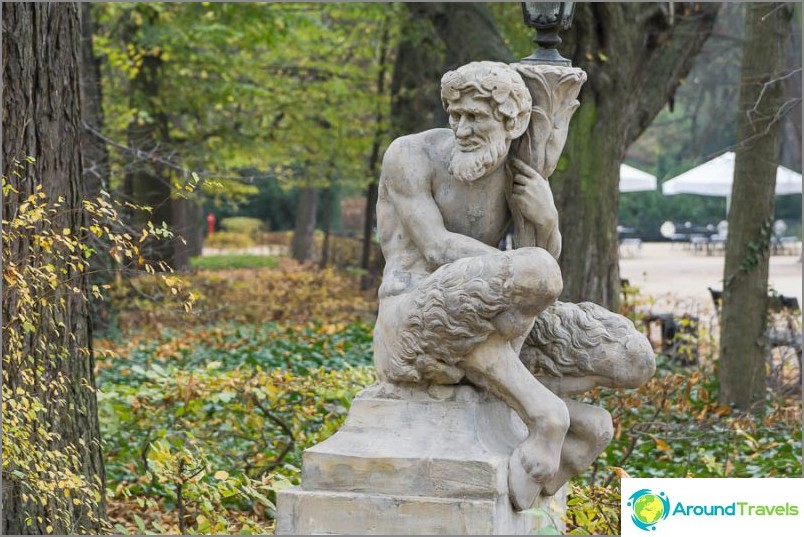
Sculptures
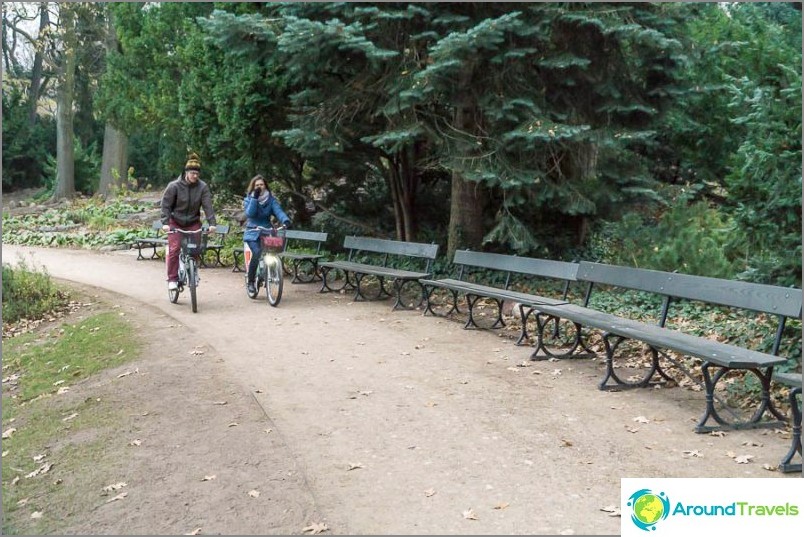
The ban on bicycles is apparently not tracked in any way
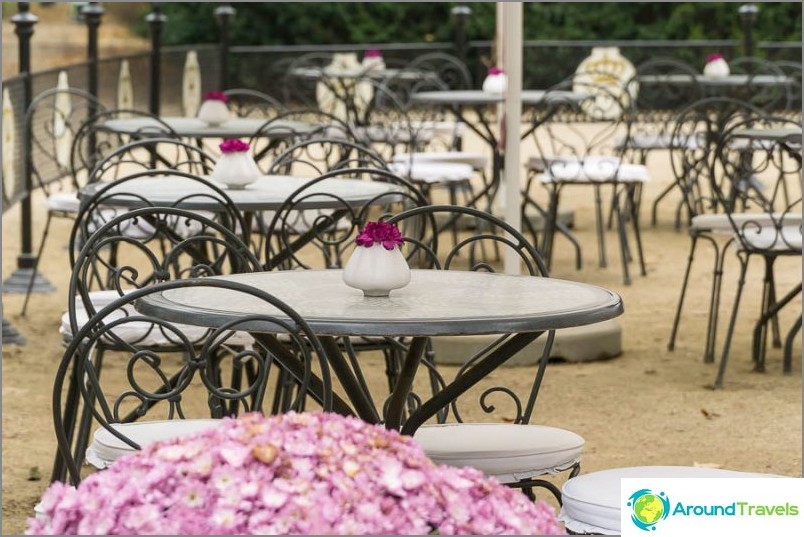
One of the empty cafes
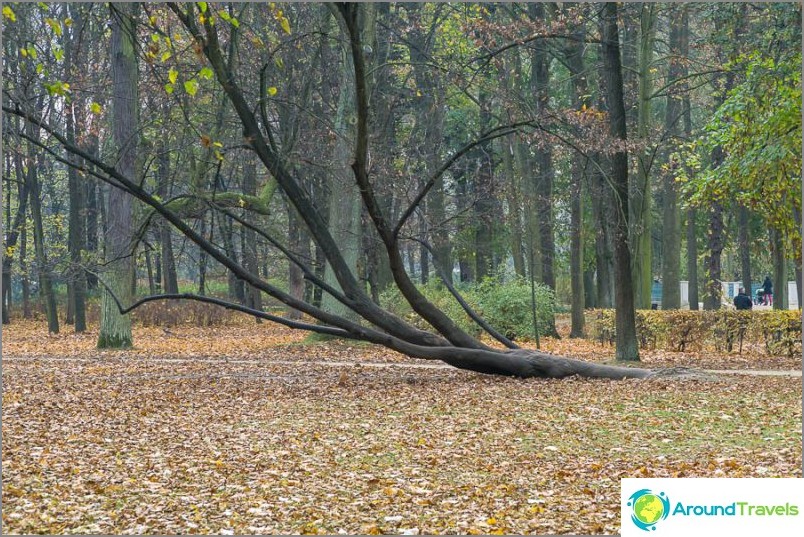
Resting tree
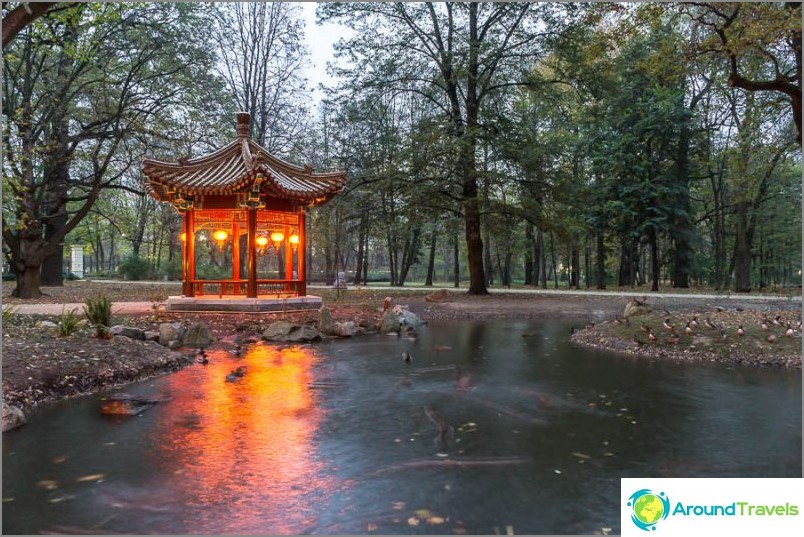
Corner of China in Lazienki Park
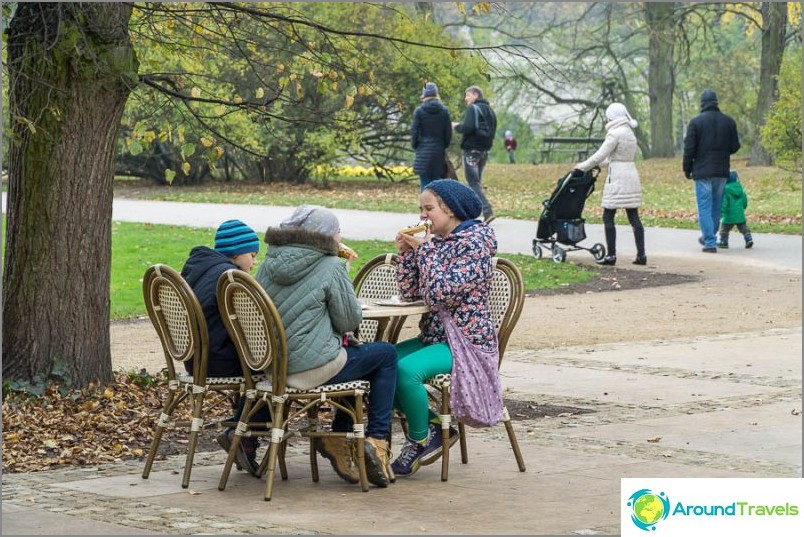
Cafe with delicious waffles and hot drinks
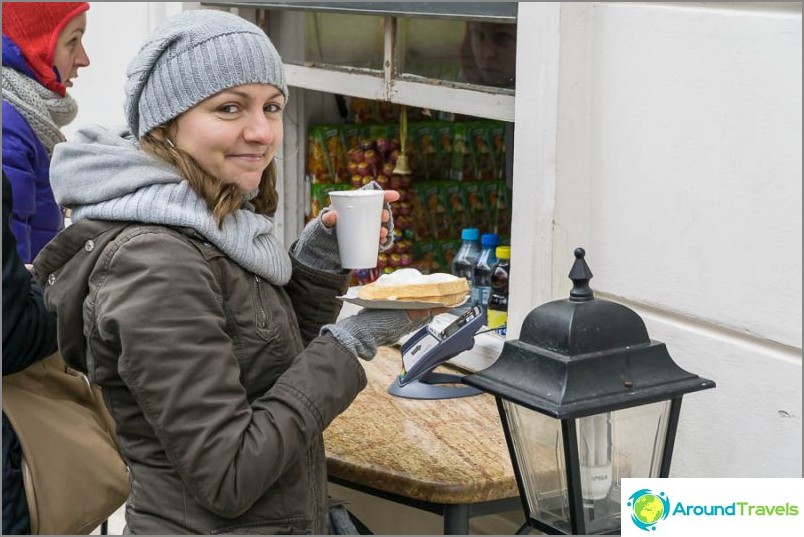
Daria could not walk past cocoa
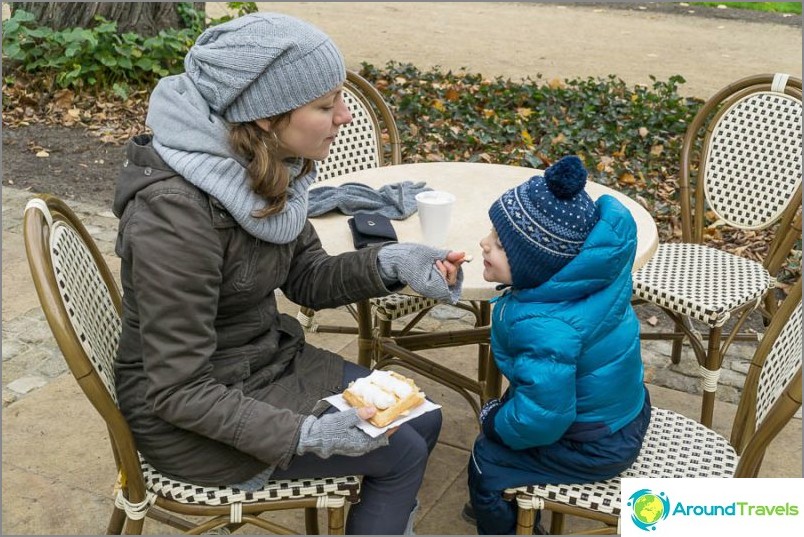
Egor, of course, immediately began to ask for a piece for himself.
But the most important difference from many other parks, which amazed me pleasantly, is naturalness. Being here, you do not feel that it is artificially created and maintained, as is the case with many parks fully rolled into concrete, with cutting trees, unnecessary decorations, when you immediately see that this is a natural installation, but not a forest park. By the way, yes, a very good word «forest park», after all, a park can be without a forest, but I like forest parks, as a kind of balance, convenient for walking in nature. And do you know what organically complements the picture? Foliage on the legs, which is not removed (hurray!), And peacocks with deer ...
Peacocks are almost tame, they can be hand-fed with some pre-stored nuts. As well as squirrels, who are also not afraid of anyone. In our case, Yegor was more fearful than animals, he was scared, and not they 🙂

Deer in the park Laeznki
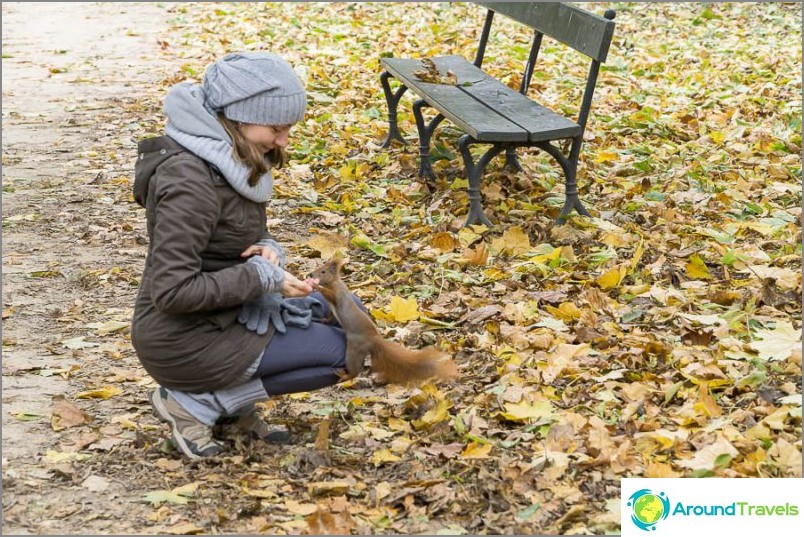
Squirrels are almost tame
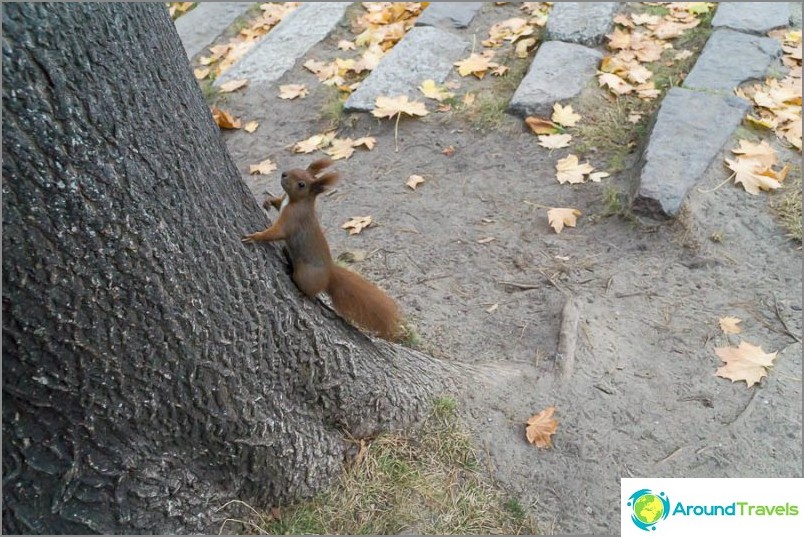
Squirrels run very fast, the shutter speed has to be set very short
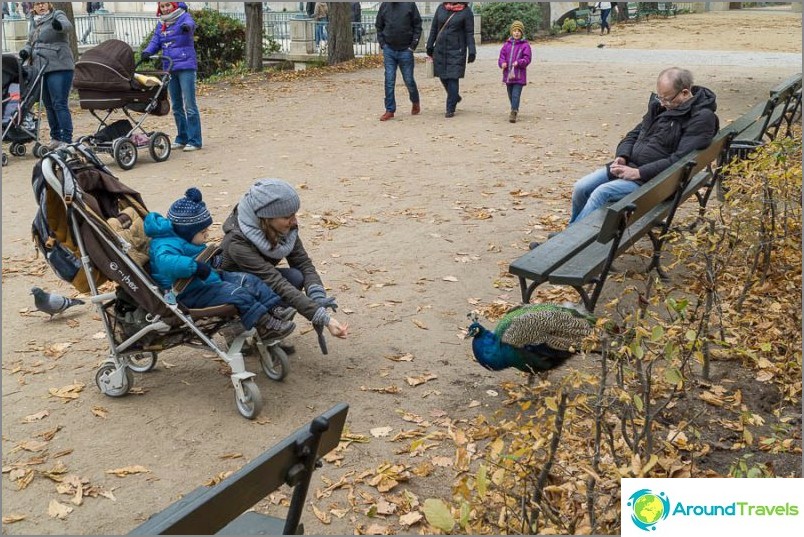
Peacocks walk among people and are almost not afraid
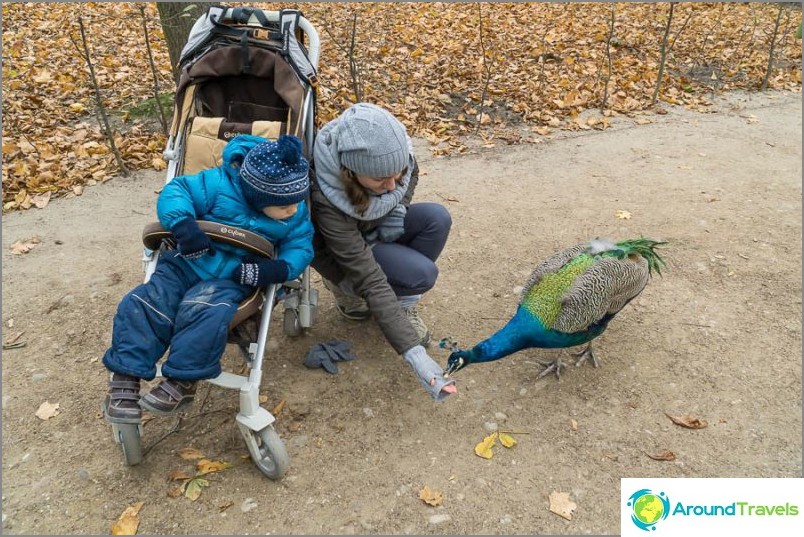
Can be hand fed
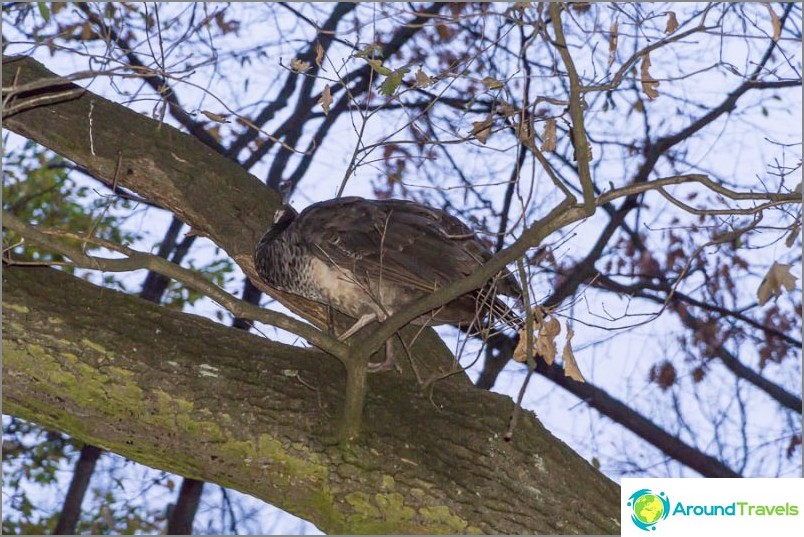
It turns out peacocks easily jump on trees and sleep there along the way.
Historical reference
The park was originally set up for the large Polish tycoon Lubomirski. Its name - Lazienki - it owes its name to the bathing pavilion at the main palace of the complex («baths» in Polish - «lazienki»). The architecture was dominated by the Gothic style. In the middle of the 18th century, the park was bought by Stanislaw August Poniatowski, the last Polish king. (After him, the republic began.) To the taste of the king, the complex was expanded, completed, reconstructed - in the classical style.
There are 44 objects worthy of attention on the park's map. The most significant - about a dozen.
Lazienki Palace, or the Palace on the Water. Built on an artificial island in the middle of the azienki lake, which divides the palace in two. Two arcades of bridges are thrown into the park. The palace-museum has a lot to see: a ballroom and dining room, royal baths, an office, bedrooms and wardrobes, two portrait galleries, etc. Until World War II, its walls were decorated with paintings by Rubens and Rembrandt. In 1944, the interiors were consumed by fire. Restoration completed in 1964.

Lazienki Palace, or the Palace on the Water
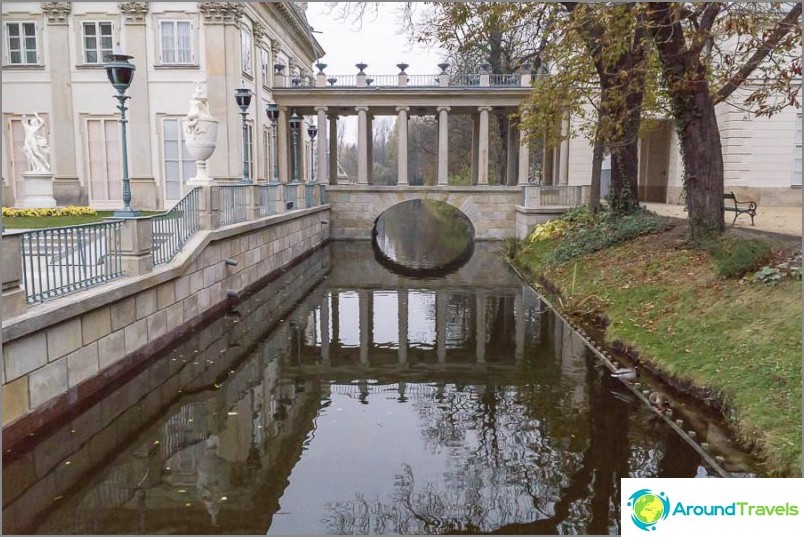
Canal near the palace on the water

Door handles cute
Roman amphitheater on the shores of Lake azienki from the end of the 18th century. A favorite place for court peacocks (birds). A very beautiful structure - an imitation of the ancient Roman theater ruins. The hall is separated from the stage by a channel. The parapet is decorated with statues of ancient poets.
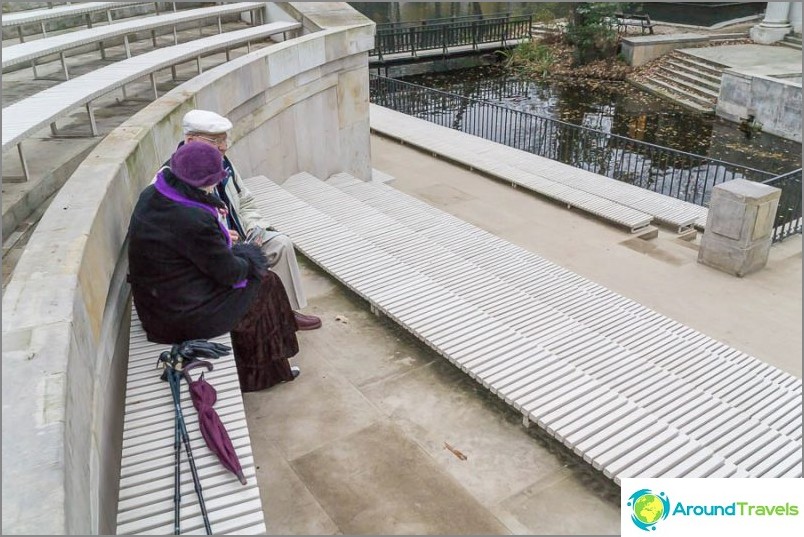
Roman amphitheater
The White House (Bialy Domek) is a modest square building (1774-1776). It is famous for the fact that it served as a place for romantic dates of King Stanislav and his mistresses. Numerous, historians emphasize. At the beginning of the 19th century, the house served as a refuge for Louis XVIII, expelled from France. Part of the interiors «boudoir» survived the war.
Myslewicki Palace (Palac Myslewicki). A palace built for the courtiers of King Stanislav. For the construction they demolished a whole village with the name «Myslevice». Now it houses the Museum of Polish Emigration.
On the borders of azienki park - Belvedere and Ujazdowski palaces.
Belvedere (Belwederski) appeared in 1660, but in 1818 it was demolished by order of the Russian government, to which it was sold. In 1824, it was rebuilt in the neoclassical style - for the Grand Duke Konstantin Pavlovich, and then for the Russian emperor himself, who was visiting Poland. Since 1918 - the property of Poland. Served as a residence for very important people. Of these, the most famous to us is Lech Walesa, who was almost canonized by the Poles for putting communism on his shoulder. Now it is the spare residence of the President of Poland.
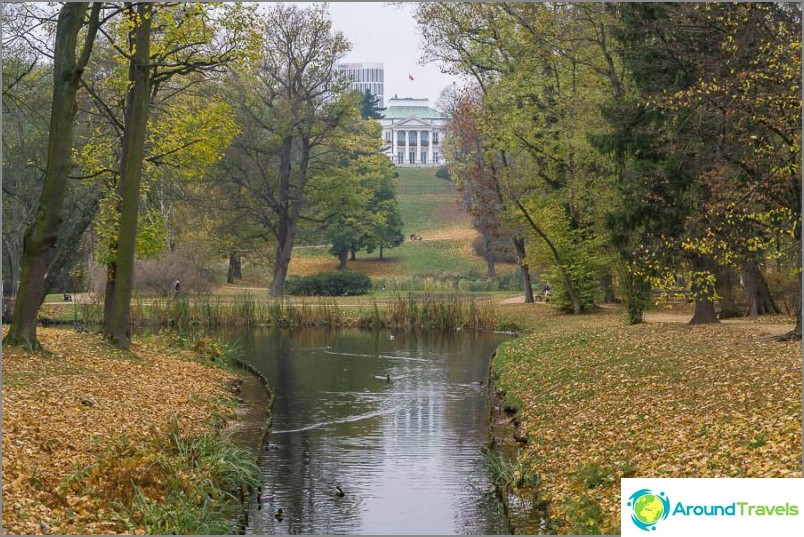
Belvedere Palace can be seen in the distance
Ujazdowski Palace of the 17th century is famous for the fact that it was donated by King Stanislav for the needs of the state (1784) - for barracks and a military hospital. In 1944 it was burned down and until the 70s of the last century it was in a ruined state. It was proposed to be demolished in order to build an army theater. The architects defended the rarity. The renovated palace houses the Museum of Contemporary Art.
On the map
Lazienki Park
Lazienki Park
An excellent forest park for walking with a child. Here you can find a peacock and even a deer.
More details
An excellent forest park for walking with a child. Here you can find a peacock and even a deer.
P.S. If you think of staying in Warsaw, here's a good place to live - Studio belweder or NWW Apartament Plac Zbawiciela, right next to the park, yet close to the city center, metro and tram.

